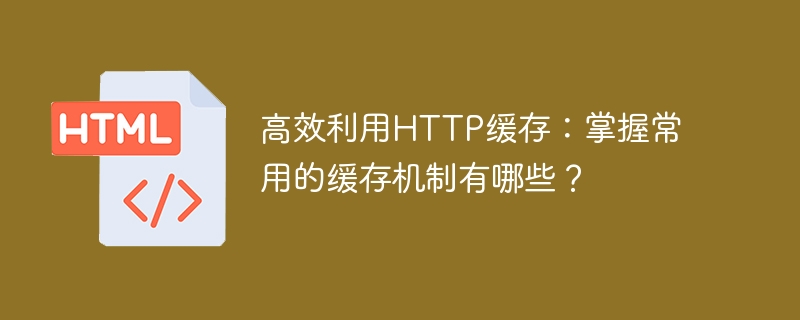

Efficiently utilize HTTP caching: What are the commonly used caching mechanisms?
Introduction:
In network applications, in order to improve user experience and reduce network resource consumption, caching technology is a very important component. HTTP caching mechanism is one of the commonly used caching technologies. By saving a copy of resources between the client and the server, it can effectively reduce the number of network requests and the amount of data transmitted. This article will introduce commonly used HTTP caching mechanisms. Mastering these mechanisms can help us make efficient use of cache and improve website performance.
Text:
Conclusion:
HTTP caching mechanism is an important means of network performance optimization. By rationally using the caching mechanism, the number of network requests can be greatly reduced, the load on the server can be reduced, and the response speed of the website and the user experience can be improved. In practical applications, we need to select appropriate caching mechanisms to improve website performance based on different business scenarios and needs, and combine caching strategies and technologies for tuning and maintenance. Only by deeply understanding and mastering commonly used caching mechanisms can we maximize the benefits of caching technology in practice.
The above is the detailed content of Master common caching mechanisms to improve HTTP caching efficiency. For more information, please follow other related articles on the PHP Chinese website!
 Why is my phone not turned off but when someone calls me it prompts me to turn it off?
Why is my phone not turned off but when someone calls me it prompts me to turn it off?
 mysql create database
mysql create database
 How to solve too many logins
How to solve too many logins
 How to use dc.rectangle
How to use dc.rectangle
 Turn off win10 automatic updates
Turn off win10 automatic updates
 Binary representation of negative numbers
Binary representation of negative numbers
 iPhone 4 jailbreak
iPhone 4 jailbreak
 Build your own git server
Build your own git server
 What are the advantages of SpringBoot framework?
What are the advantages of SpringBoot framework?




